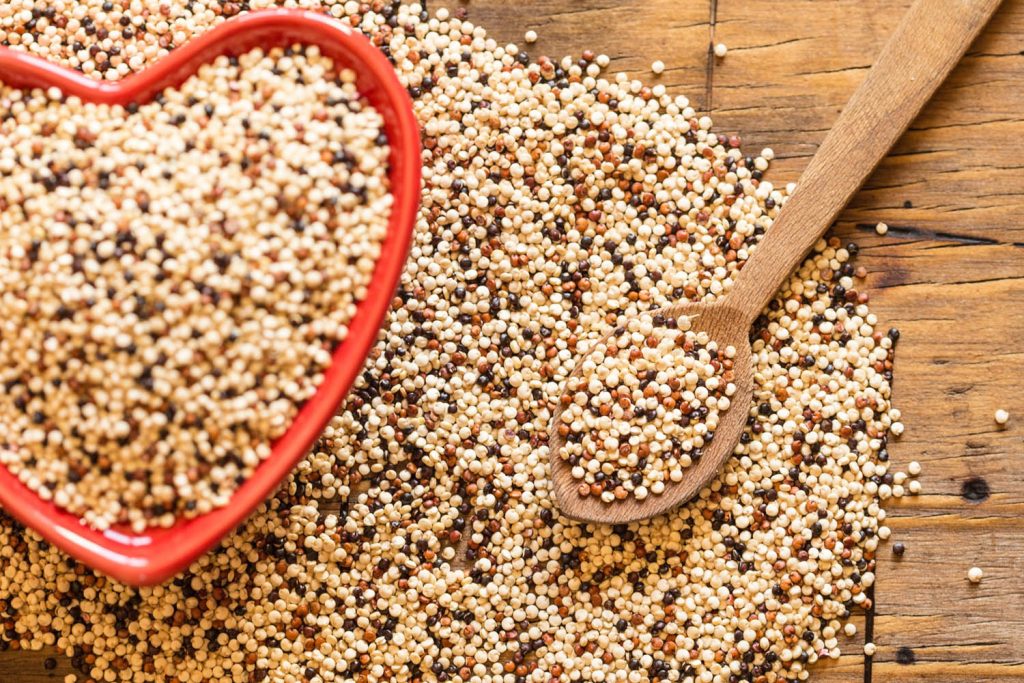As two superfoods, Quinoa and Millet are usually set in a comparative light. Quinoa is a whole grain plant that is grown for its edible seeds, it has been used as a substitute for rice owing to its vast nutritional value.
Quinoa has been in existence for as early as 5,000 years amongst the Incas in the mountains of Chile, Bolivia, and Peru. It later gained popularity as a superfood in 2013 when the United Nations declared the year the International Year of Quinoa.
Millet on the other hand is a cereal grain popularly grown and consumed in Africa and Asia, particularly India. Millet-like quinoa can also act as a substitute for rice, it can be cooked with spices, toasted for a nutty flavor, or grounded to serve as flour.
Interestingly, both can serve as perfect substitutes for each other. Quinoa can easily replace Millet in a meal and vice versa, this is owing to their similarities in vast nutritional value and benefits. They are both also healthier and tasty substitutes for rice, bulgar, amaranth, sorghum, barley, couscous, roast cauliflower, chickpeas, and red beans.
Nutritional Benefits Of Eating Quinoa
Being an easy substitute for grained foods such as rice, Quinoa is packed with various health and nutritional benefits that have been a pedestal in its rise to popularity and its acceptance by world health professionals such as the Food and Agriculture Organization of the United Nations.
Below are the nutritional benefits of Quinoa;
- Quinoa is a healthy and advisable grain option for persons looking to lose weight. This is owing to the presence of a higher concentration of protein and fiber in Quinoa than in other grains. Protein and fiber are filling and helps manages one’s appetite and help keep cravings at bay.
- It has also been known for consisting of nutrients such as iron, magnesium, B vitamins, chromium, and folate which according to studies help in managing blood sugar and preventing diabetes.
- As a gluten-free grain, Quinoa is a great choice for persons with coeliac disease that are unable to eat grains that contain gluten.
- Quinoa is an anti-inflammatory grain and has beneficial gut bacteria present in it that reasonably improve gut health.
- Quinoa contains nine essential amino acids, heart-healthy omega-3 fatty acids, higher content of monounsaturated fat, calcium, magnesium, carbohydrates, and fiber. This nutritional concentration and its low glycemic index (GI) make it a suitable substitute and healthier option than other grains.

Nutritional Benefits Of Eating Millet
Easily identified as a superfood, millet also possesses nutritional benefits that have made it a constant favorite and a multi-serving grain in different regions of the world. These benefits are listed below;
- Millet improves digestive health by being rich in soluble and insoluble fiber. Its insoluble fiber is called a prebiotic.
- Millet contains more complex carbohydrates than simple carbohydrates making it a low glycemic index (GI) food that helps persons with diabetes manage their blood sugar levels better.
- Millet is also a good source of antioxidants hence it aids in slowing down the body’s aging process.
- Millet is completely gluten-free and serves as a healthy food substitute for rice in the diet of persons who are gluten intolerant and prone to celiac disease.
- The soluble fiber present in Millet aids in the reduction of unhealthy cholesterol in the blood. This unhealthy cholesterol affects the heart and regularly eating millet raises good cholesterol levels hence protecting the heart.
Quinoa And Millet Similarities
Quinoa and Millet are easily subject to several scales of comparison, an attempt by dietitians and persons building a diet to figure out which of the two is more nutritional and beneficial to their diet. They however have similar benefits that make them both suitable diet options, rather than picking one instead of the other, incorporate both into the diet.
- Quinoa is from a flowering plant family called Amaranth and it has gluten-free seeds which is why quinoa can be consumed by people with gluten intolerance. Millet’s seeds are also gluten-free in nature and can serve as a good option for gluten intolerant persons.
- Both Quinoa and Millet are made up of minerals such as magnesium, phosphorus, copper, folate, iron, magnesium, and zinc and offer a higher concentration of amino acids than other superfoods.
- They also both are known for being great at controlling blood sugar levels which are owing to their high fiber concentration that slows down digestion resulting in a reduction of sugar spikes in the bloodstream.
- Quinoa and Millet possess high levels of potent antioxidants that effectively protect the DNA, reduce cell inflammation, and fight age-related health conditions.
- These two super foods are richer in protein than other grains or cereals of their kind. This makes them more filling and they stay in the digestive system longer, reducing cravings and hunger and hence are great options for persons on a weight loss diet.
Quinoa And Millet Differences
After outlining the similarities of these superfoods, there is a need to also acknowledge their differences, while still holding on to the opinion that is both great dietary options despite these differences.
- Quinoa has a creamy texture and tastes like brown rice or oats when cooked while Millet has a slightly nutty flavor which is enhanced when roasted before consumption.
- Quinoa comes in a round shape and has red, white, and black colored seeds. Millet seeds are smaller in comparison with Quinoa and come in white, green, yellow, brown, and red colors.
- Quinoa is not advised to be consumed by persons with kidney stones because it is high in calcium and oxalates leading to kidney stone formation. Millets except for finger millet however can be consumed safely by patients with kidney stones.
- The major nutritional difference between Quinoa and Millet is that the latter contains nine essential amino acids that the body cannot produce. This makes Quinoa a complete protein while Millet is not as it lacks Lysine.
- The price difference between Quinoa and Millet in different regions of the world is also a major point. Quinoa is more expensive than Millet, hence millet is more affordable and thereby an easier option for persons who are on a diet tied to a budget.
In Summary
An objective conclusion has been drawn that both Quinoa and Millet are great diet options that are rich in nutrients and have several health benefits.
They have similarities and differences that only convince one why they are rightfully referred to as superfoods. As substitutes for several grains and being a great addition to salads and other foods, both should be equally taken advantage of.
REFERENCES

